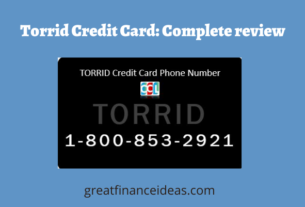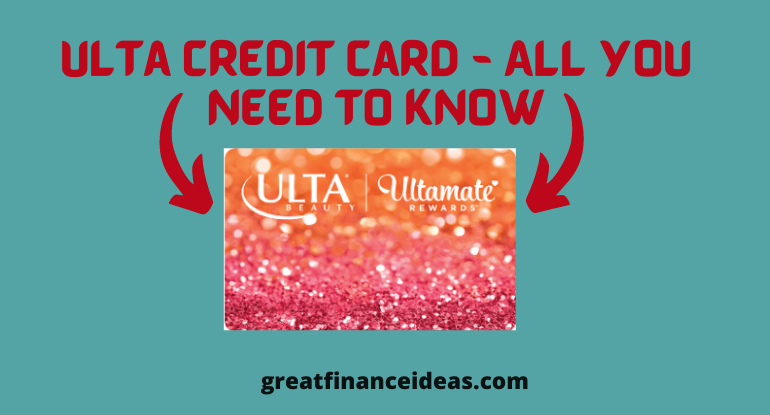It is vital to know the significant differences between secured and unsecured credit cards before applying for a credit card.
In this post, I differentiate between the two types of credit cards to help you make a better and honest decision.
Choosing a type of credit card to use is a big financial decision.
Going with the trial and error approach to applying isn’t the best way, especially considering the major differences between secured and unsecured credit cards.
The two cards are for people in entirely different situations and classes.
Searching for the exact differences between the two types of credit cards can sometimes be challenging and difficult. I’m here to help sort it out and provide answers to your questions.
In this post, I will try as much as possible to differentiate between secured and unsecured cards and help you understand which one is better for you.
Table of Contents
Differences between Secured and Unsecured Credit Cards
The primary difference between secured and unsecured credit cards is you are required to make a deposit (known as a security deposit to act as collateral), generally equal to your credit limit to obtain a secured credit card.
You can equally use a secured card as a regular card since major card networks and systems also support them. But you must remember, a secure card is NOT the same as a prepaid card.
You will need to pay a credit card bill to avoid incurring charges. A secured card generally has a higher interest rate and higher credit limits than unsecured cards’ interest rates.
You may like: Best 3 Ways to Activate BofA Credit Card
Why go for a secured credit card?
If you have no credit history or bad credit, a secured credit card used wisely enables you to build or rebuild positive credit history.
Unsecured credit cards typically have lower APRs and offer rewards than the rates of secured cards, but securing approval for one requires you to have a decent credit score – within the mid-600s range. The higher APRs attached to secured cards act as an insurance policy for the bank.
Analyzing the benefits and drawbacks of the different types of cards will guide your decision making easier.
Secured Credit Cards Benefits and Drawbacks
Here let’s take a look at the benefits and drawbacks that comes with both cards to help you make a better decision.
Benefits
#1. You can qualify even with your bad credit or no credit history: For those who need a way to get back on their feet financially, secured cards can go a long way to help you since they have few approval qualifications and their lower approval requirements make things a little easier.
#2. Your deposit is refundable: Paying a deposit to get a credit card isn’t convenient. But as long as you keep your account in good standing and pay off your balances as at when due, the deposit you make is refundable, and you will get your initial deposit back in full.
#3. It makes building a good credit history easy: If you are new and never used a credit card before, or you need an improving credit score, a deposit-protected secured card offers you a better platform to build upon.
Read Also: How to Remove Restriction on Capital One Credit Card
Drawbacks
#1. Little to no rewards: Whereas some secured credit card providers offer small perks like cash back, others do not provide any benefit in return outside of the credit history, build your credit back up and practice using credit wisely.
#2. Few issuing banks do not report to credit bureaus: To improve on your credit score history, your credit card account needs to be reported to the bureaus. However, not all secure credit cards report to the bureaus. You’ll need to check to make sure before applying for a card.
#3. Requirements for Initial deposit: Setting aside a few hundred dollars can be quite challenging and could negatively impact a tight budget. However, it would be refunded eventually, but not necessarily convenient.
#4. Low credit limit: The exact amount you deposit instantly becomes the card’s credit limit. The minimum initial deposit is typically $200. If you can’t deposit a couple of thousand dollars, you will not have a large credit limit. This will be even more important to help you watch your spending so that your debt to available credit ratio doesn’t rise too high.
#5. Exorbitant fees: In addition to the initial deposit, you may need to face some non-refundable fees such as annual fees, monthly maintenance charges, and even application and processing fees.
Unsecured Credit Cards: Benefits Vs. Drawbacks
Benefits
#1. Lower interest rates and fewer fees: Those that have a well-established credit history and good-to-excellent credit scores range can access an unsecured card that will cost them less over time. You will need to pay lower interests and fewer fees.
#2. Outstanding benefits and rewards: Making good use of your credit card wisely for bigger purchases and expenses can equally earn you money back if cards are used strategically. Some cards offer benefits like travel benefits and balance transfer deals.
#3. Multiple Card Options: There are hundreds of multiple options and types of unsecured credit cards out there that give you some excellent benefits ranging from low-interest rates, rewards, balance transfer deals, or excellent travel benefits, you will definitely have options with ease.
#4. Increased credit limits: Making large purchases can be a lot easier with an unsecured credit card without maxing out the card or hurting your utilization ratio and subsequently decreasing your credit score.
Unsecured Cards Drawbacks
Varying approval qualifications: You will need to do some research to find a card that fits your needs and your credit score due to the fact that not all unsecured credit cards are built the same, and credit score requirements will vary. Even if you’ve been a responsible cardholder, you may not still qualify for the best reward unsecured credit cards.
Which Credit Card Should You Get?
If you already have and enjoy a good credit score and are in a good financial position, it is advisable to go for an unsecured card. There are multiple options to select from, and choosing a card that gives you just the right options and benefits should be easy and stress-free.
However, if you have no credit card history or recently had a setback that puts you on a bad credit score, I would advise you to go for a secured credit card and, when used wisely, enables you to build or rebuild a positive credit score.
It’s equally vital to ensure that your budget can accommodate the deposit and other fees.
You must ensure that the secured credit card in your possession reports to credit bureaus. All the troubles you may encounter to increase your credit score won’t matter if it doesn’t reflect on your credit report.
Upgrading to an Unsecured Card
You can upgrade to an unsecured card if you spend time at least a year to build a good credit history with a secured card by paying off your additional debts or past due balances and obligations elsewhere, straighten out those accounts during this period.
This would show that you’re a responsible cardholder. After several months of responsible secured card use, your secured card issuer may automatically convert your account to an unsecured card and refund your deposit.
But if the issuer doesn’t do it for you, there is nothing to worry about. Just keep an eye on your credit score, and when it reaches the mid-600s and a good year of smart credit card use under your belt, contact your secured card issuer and ask if they can graduate you to an unsecured one.
Secured credit cards are an excellent credit score building tool. The most significant thing to remember when obtaining one is to check if the issuer reports your activity to the credit bureaus.
The lack of reporting is a sign of a bad credit card.



